What Is A Pl Filter
Camera lens filters can serve different purposes in digital photography. They can be indispensable for capturing scenery in extremely hard lighting conditions, they can heighten colors and reduce reflections or tin can simply protect lenses. Filters are widely used in photography and cinematography and while some only use filters in rare situations, others rely on filters for their everyday work.
If you'd like to larn about filters in a video format, we've created one of the most comprehensive tutorials about filters anywhere on Youtube, which yous tin see below:
So, what makes filters and then useful? It actually depends on the type of photography yous do.
For example, landscape photographers heavily rely on various filters, while street and portrait photographers rarely go to utilise them. Since digital photography is all about the quality and intensity of low-cal, lens filters are frequently necessary to modify the light before it enters the lens. Many photographers recollect that some of the congenital-in tools in Lightroom and Photoshop can simulate filter behavior, making filters redundant in the digital age. As I will demonstrate below, some filters, in fact, tin can never be simulated in software and some really help in getting even better results during mail service-processing. In this article, I will talk about the unlike types of lens filters bachelor, what they do, when and how to use them.
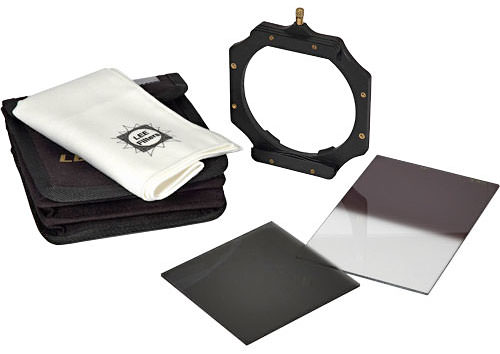
Table of Contents
What are Filters and Why Should Y'all Employ Them?
Why practice you wear sunglasses? Because along with other benefits, they assist you see better in intense lite, protect your eyes from harmful UV rays/wind/grit and reduce glare. Filters as well serve a similar purpose – they can assistance reduce reflections, protect your lenses from potential damage, fully or partially reduce the amount of low-cal that enters the lens and even enhance colors. At the aforementioned time, filters tin actually hurt photographs if they are non properly used. A good analogy would be wearing sunglasses in a dark room. Therefore, not but do you demand to know what filters to use, simply you also need to know how to use them and in which situations. At that place are many different kinds of filters out there – from cheap UV filters to very expensive filters worth several hundred dollars, which tin brand the procedure of choosing the right filter type rather challenging.
Permit's go through the different types of filters that are available today.
Overview of Types of Lens Filters
Here is a list of typical lens filters yous can purchase today, forth with descriptions of their purposes:
| Lens Filter | Photography Type | Purpose |
|---|---|---|
| UV/Clear/Haze Filter | Whatsoever | Protects the front end chemical element of a lens from dust, dirt, wet and potential scratches. High quality UV filters tin be permanently mounted on lenses with a minimum impact on image quality. |
| Polarizing Filter | Whatsoever | Filters out polarized lite, dramatically reducing reflections, enhancing colors and increasing dissimilarity. Tin be used for any type of photography. Polarizing filters are typically circular, assuasive for easy control of the effect of polarization. |
| Neutral Density (ND) Filter | Mural, Flash Photography | Reduces the corporeality of light entering the lens, thus decreasing camera shutter speed. Useful for situations where motion mistiness needs to exist created (rivers, waterfalls, moving people) or large apertures must be used with wink to avert overexposure. |
| Hard-Border Graduated Neutral Density (GND) Filter | Landscape Photography | Difficult-edge GND filters are primarily used in high contrast situations, where the sky is much brighter than the foreground and the horizon is flat. These filters are always rectangular (giving the ability to motion them in all directions) and are typically used with filter holders. |
| Soft-Edge Graduated Neutral Density (GND) Filter | Landscape Photography | Soft-edge GND filters are likewise used in high contrast situations, but where the horizon is not necessarily flat. The soft border allows for smoother transitions, making the use of a filter less evident. Soft-edge GND filters are also rectangular and are normally used with filter holders. |
| Reverse Graduated Neutral Density (GND) Filter | Landscape Photography | The reverse GND is a specialized filter used by landscape photographers when shooting against the dominicus while it is setting close to the horizon. While a regular GND filter gradually transitions from nighttime to clear towards the middle, a reverse GND filter transitions from dark to less dark from the center to the edge. |
| Colour/Warming/Cooling Filter | Any | Corrects colors, resulting in a change in photographic camera white residuum. Some colour filters can subtract colors, blocking one type of color and allowing other colors through. These types of filters are pop for pic. They are rarely used in digital photography, since their effects tin be easily practical in post-processing. |
| Close-Up Filter | Macro Photography | Also known equally "diopter," a close-upwardly filter allows a lens to focus closer on subjects. These filters are only used for macro photography. |
| Special Effects Filter | Any | There are a few different types of special effects filters. Star filters make bright objects look star-like; softening/diffusion filters create a "dreamy" look used for portraits, multivision filters create multiple copies of a subject; infrared filters block infrared and pass visible light; bokeh filters have a sure shape cut in the middle of the filter that makes bokeh highlights take the same shape, etc. |
Types of Lens Filters
Lens filters come in different shapes and forms, as shown below. The most popular lens filters are circular, screw-on filters. Those mount direct onto the filter thread in front of a lens. They come in different sizes, depending on the lens filter thread. The standard and the nigh common size of spiral-on filters for professional lenses is 77mm.
Types of Lens Filters:
- Circular screw-on filters – well-nigh common type that mounts directly on the lens filter thread. Examples of circular screw-on filters include UV/Clear/Brume filters, circular polarizers, neutral density and colour filters. Circular filters as well come in dissimilar thicknesses – some are thick that can potentially add vignetting, while others are ultra-thin to diminish vignetting, but make it impossible to put a lens cap.
- Square filters – a popular choice for landscape and other photography. A filter holder directly attaches to the lens filter thread and tin can hold one or more filters. The most popular sizes are 3×3 and iv×4. Tin be stacked together in certain situations, which tin negatively touch paradigm quality and add reflections.
- Rectangular filters – another popular choice, primarily among landscape photographers. Mounted but like square filters via a filter holder system. Because it is impractical for graduated neutral density filters to be circular (due to different sizes of high-contrast areas and limerick), rectangular filters are the principal choice for landscape photography. Unlike square filters, they accept more room to move upwards and down. The most popular size is 4×half dozen, although larger and smaller filter sizes are also available.
- Drop-in filters – these filters are used inside long telephoto lenses, due to the large size of the front lens element. Only articulate and polarizing filters are used for drop-in filters.
Lens Filters Explained in Particular
Permit me get through each filter blazon in detail and show the effects they produce in pictures (where applicable). Information technology is ofttimes too hard to understand what each filter does and decide on whether you need information technology or not, so I hope the beneath data will make it easier for you to decide whether you want a item type of filter or not.
UV/Clear/Haze Filter
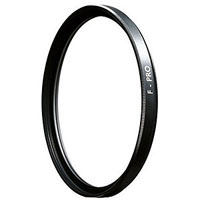 The purpose of a UV / Clear / Brume filters today is to simply protect the front element of a lens. In the past, these filters were used to block UV from hitting the film. All digital camera sensors take a UV/IR filter in front of the sensor, so there is no more need to apply UV filters on DSLRs. Many photographers use these types of filters for protection, considering information technology is easier and cheaper to replace a filter than to try to repair a scratched or cleaved lens chemical element. I personally prefer to continue a clear filter on my lenses at all times, considering they are easier to make clean.
The purpose of a UV / Clear / Brume filters today is to simply protect the front element of a lens. In the past, these filters were used to block UV from hitting the film. All digital camera sensors take a UV/IR filter in front of the sensor, so there is no more need to apply UV filters on DSLRs. Many photographers use these types of filters for protection, considering information technology is easier and cheaper to replace a filter than to try to repair a scratched or cleaved lens chemical element. I personally prefer to continue a clear filter on my lenses at all times, considering they are easier to make clean.
Ane thing you lot take to make certain before you purchase a clear filter, is that yous buy loftier-quality glass with the special multi-resistant coating (MRC). The worst thing you can do is mount a depression-quality filter in front of an expensive lens. Not only will it hurt image quality, but it will as well add nasty reflections, ghosts, and flares to your images. I personally prefer B+Westward F-Pro MRC filters (they are not cheap), but you can also buy other great alternatives from Tiffen, Hoya, and other manufacturers.
Should you use a clear filter permanently on your lenses? This question brings upwards heated debates between photographers. Many believe that adding a slice of glass in front of lenses only hurts images and does very little to protect them, while others like me continue them for peace of heed and easier cleaning. Some lenses with threaded front elements similar the Nikon 50mm f/1.4G tin be painful to clean, so a clear filter would make lens maintenance less cumbersome.
To avoid vignetting and other bug, UV filters should never be stacked with other filters.
Polarizing Filter
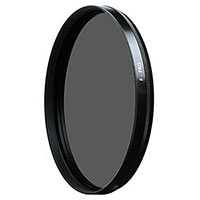 There are two types of polarizing filters – linear and circular. Linear polarizers should not be used on DSLR cameras, because they can result in metering errors. Circular polarizers, on the other manus, are perfect for DSLRs and exercise not cause whatever metering issues due to their construction. Circular polarizing filters are substantially linear polarizers, with a second glass element attached to their back that circularly polarizes the light, giving accurate exposure results when the calorie-free hits the calorie-free meter. When the 2 elements are aligned at the right handle and orientation from the sun, the captured image could have more than saturated colors, bluer skies, fewer reflections, and higher overall dissimilarity. Polarizing filters can besides reduce haze, which is very useful for landscape photographers.
There are two types of polarizing filters – linear and circular. Linear polarizers should not be used on DSLR cameras, because they can result in metering errors. Circular polarizers, on the other manus, are perfect for DSLRs and exercise not cause whatever metering issues due to their construction. Circular polarizing filters are substantially linear polarizers, with a second glass element attached to their back that circularly polarizes the light, giving accurate exposure results when the calorie-free hits the calorie-free meter. When the 2 elements are aligned at the right handle and orientation from the sun, the captured image could have more than saturated colors, bluer skies, fewer reflections, and higher overall dissimilarity. Polarizing filters can besides reduce haze, which is very useful for landscape photographers.
I never leave my home without a polarizing filter. When photographing landscapes, I often apply a polarizing filter to spice up the colors, darken the sky and reduce haze. Polarizing filters are a must when photographing waterfalls or other wet scenery with vegetation.
There are a couple of potential issues that you demand to understand when using a polarizing filter:
- There is a minimum and a maximum effect of polarization, depending on the filter alignment. You should rotate the filter every time you lot etch for best results. Have a wait at this example of minimum and maximum effect of polarization:

NIKON D700 + 24-70mm f/2.8 @ 26mm, ISO 200, 1/640, f/8.0 - The event of polarization changes relative to the sunday. The maximum effect of polarization is achieved when the lens is pointed 90 degrees from the lord's day (in any direction). A elementary trick is to grade a pistol with your index and thumb fingers, then point your alphabetize finger at the sun. Keep pointing at the sun and rotate your manus clockwise and counter-clockwise. The maximum effect of polarization will be where your thumb points in any direction.
- Avoid using a polarizing filter on ultra wide-angle lenses. Yous might end up with a partially nighttime heaven that will be tough to fix in post-processing. Here is an case of what happens when using a polarizer on a wide-angle lens:
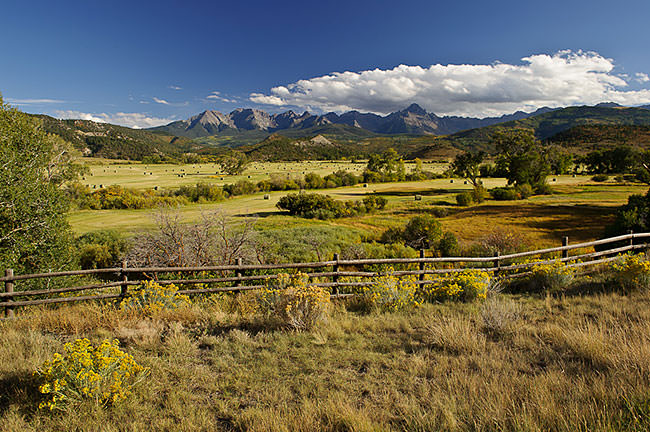
- In some cases the maximum effect of polarization tin result in an unnatural-looking dark blue sky as shown below:
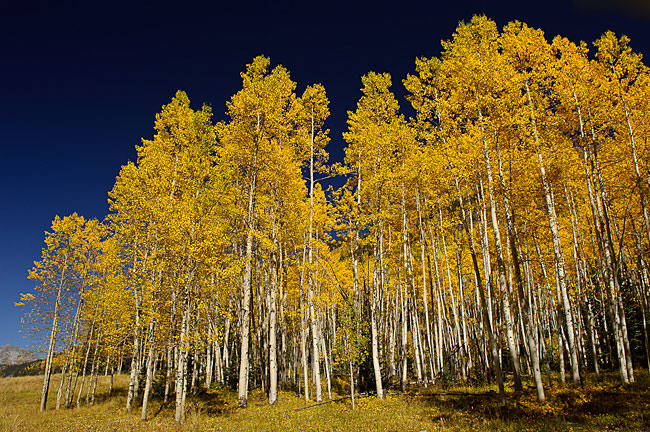
- There is a loss of approximately 2 stops of light when using polarizing filters, so you should sentinel your shutter speed when shooting with a polarizer hand-held. Singh-Ray polarizing filters are better than others in this regard and only lose around 1 stop of light.
- Polarizing filters are typically thicker than regular filters and therefore tin can consequence in unwanted vignetting.
To avoid vignetting, polarizing filters should not be stacked with other filters. Due to light loss, you should also apply a polarizing filter merely when needed. In some high-contrast situations, it might be necessary to stack a polarizing filter with a neutral density filter (encounter below).
Neutral Density (ND) Filter
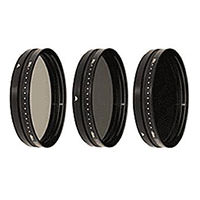 The purpose of neutral density filters is to reduce the amount of light that gets to the camera and thus decrease the shutter speed and increase exposure time. These types of filters are especially useful in daytime, because of the abundance of light that cannot be significantly reduced past stopping downwardly the lens discontinuity and decreasing ISO. For example, if you are photographing a waterfall and your starting bespeak is ISO 100, f/ii.8, ane/2000 that results in practiced exposure, stopping down the lens to f/22 will but slow down the shutter speed to ane/30 of a second. This would be too fast to create a "foggy" look for the falling water. By using an eight stop neutral density filter, yous could boring down the shutter speed all the style to ii seconds while keeping lens aperture at f/11 instead of f/22 (using apertures across f/11-f/16 in normal lenses decreases epitome quality due to diffraction).
The purpose of neutral density filters is to reduce the amount of light that gets to the camera and thus decrease the shutter speed and increase exposure time. These types of filters are especially useful in daytime, because of the abundance of light that cannot be significantly reduced past stopping downwardly the lens discontinuity and decreasing ISO. For example, if you are photographing a waterfall and your starting bespeak is ISO 100, f/ii.8, ane/2000 that results in practiced exposure, stopping down the lens to f/22 will but slow down the shutter speed to ane/30 of a second. This would be too fast to create a "foggy" look for the falling water. By using an eight stop neutral density filter, yous could boring down the shutter speed all the style to ii seconds while keeping lens aperture at f/11 instead of f/22 (using apertures across f/11-f/16 in normal lenses decreases epitome quality due to diffraction).
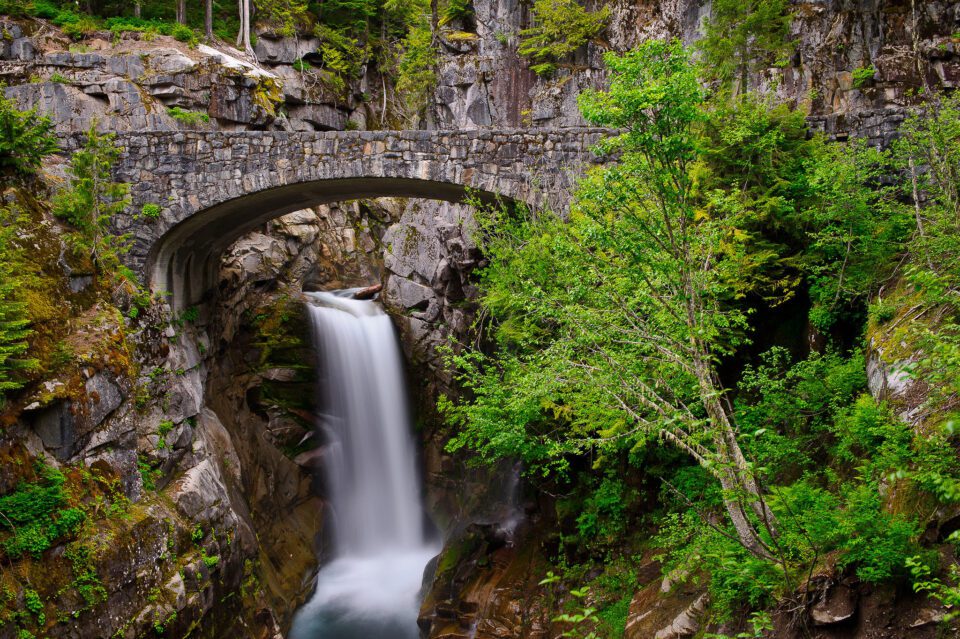
Neutral density filters are too useful for flash photography. If y'all were photographing a model at 1/250 of a second at f/2.8 on a bright sunny day with flash to create a dramatic issue, y'all would most likely cease up with an overexposed subject area. You cannot increase the shutter speed because flash sync speed limits you to 1/250 max, and then your just option is to terminate downwards the lens aperture to a larger number. Let's say that number is f/11. Just then what if you want to isolate your subject from the background and even so have nice bokeh? Without using high-speed sync, your only option is to use a neutral density filter to reduce the corporeality of light that makes it to the camera.
Neutral density filters tin be both circular and rectangular. At that place are no benefits to having a rectangular neutral density filter, so it is best to purchase a circular ND filter for size and portability benefits.
It is sometimes necessary to stack neutral density filters to decrease the shutter speed fifty-fifty more. Try not to stack ND filters with wide-bending lenses to avoid vignetting.
Neutral Density (ND) vs Graduated Neutral Density (GND) Filter
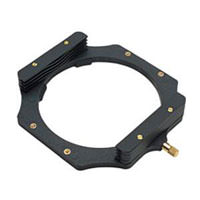
The difference between neutral density and graduated neutral density filters is that the latter is half articulate. Because the size of the sky versus the foreground can modify depending on the limerick, about GND filters are fabricated in a rectangular shape. Therefore, these filters must exist either used with a filter holder system, or must be held by manus in front of a lens. The reward of using a filter holder is that yous can stack multiple filters and you do not have to worry virtually alignment issues. The disadvantage of using a filter holder is that it can add together vignetting, then you take to be careful when using wide-bending lenses with focal lengths below 35mm.
The paradigm in a higher place is Lee's filter holder that can stack up to four filters at a time. I personally use this filter organization for my mural photography work and I accept it with me everywhere I go. When using the filter holder on a total-frame body with my Nikon 24-70mm f/ii.8G, I endeavor to use focal lengths of 28mm and above to avoid vignetting. If you mount this filter holder on a polarizing filter, yous might end up with vignetting even at 35mm and above.
Difficult-Edge Graduated Neutral Density (GND) Filter
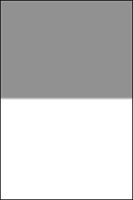 Difficult-edge graduated neutral density filters can exist very useful in high-contrast situations, where the heaven is very bright compared to the foreground and the horizon is flat (due to hard transition from night to articulate). While photographing, the hard edge in the heart is aligned with the horizon. The sky is then darkened depending on the intensity of the filter. A two or iii-stop hard-edge GND filter is ofttimes sufficient to residuum the shot.
Difficult-edge graduated neutral density filters can exist very useful in high-contrast situations, where the heaven is very bright compared to the foreground and the horizon is flat (due to hard transition from night to articulate). While photographing, the hard edge in the heart is aligned with the horizon. The sky is then darkened depending on the intensity of the filter. A two or iii-stop hard-edge GND filter is ofttimes sufficient to residuum the shot.
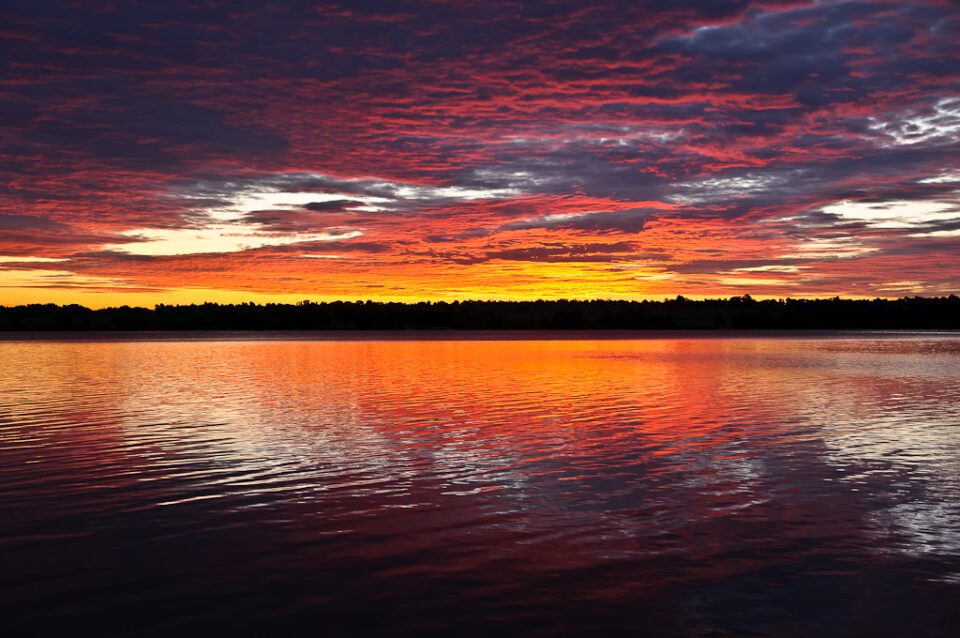
Note that the horizon is straight and therefore the filter edge and transition are not visible in the image.
The problem with hard-edge GND filters is that the horizon is rarely flat (especially where I live), and so soft-edge GND filters are ofttimes more than useful. Be careful when stacking hard-border GND filters in high contrast situations – both filters should be properly aligned to avert nasty transitions.
Soft-Edge Graduated Neutral Density (GND) Filter
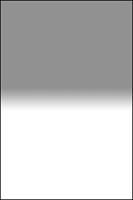 Compared to difficult-edge GND filters, soft-edge graduated neutral density filters gradually transition from dark to clear, allowing photographers to use these filters when photographing a non-flat horizon. While mountains, hills and other objects above the horizon can be problematic for hard-edge GND filters, soft-edge GND filters work much ameliorate in those situations instead, due to the gradual transition. I use soft-border GND filters for my mural photography work a lot and find them more useful than hard-edge GND filters.
Compared to difficult-edge GND filters, soft-edge graduated neutral density filters gradually transition from dark to clear, allowing photographers to use these filters when photographing a non-flat horizon. While mountains, hills and other objects above the horizon can be problematic for hard-edge GND filters, soft-edge GND filters work much ameliorate in those situations instead, due to the gradual transition. I use soft-border GND filters for my mural photography work a lot and find them more useful than hard-edge GND filters.
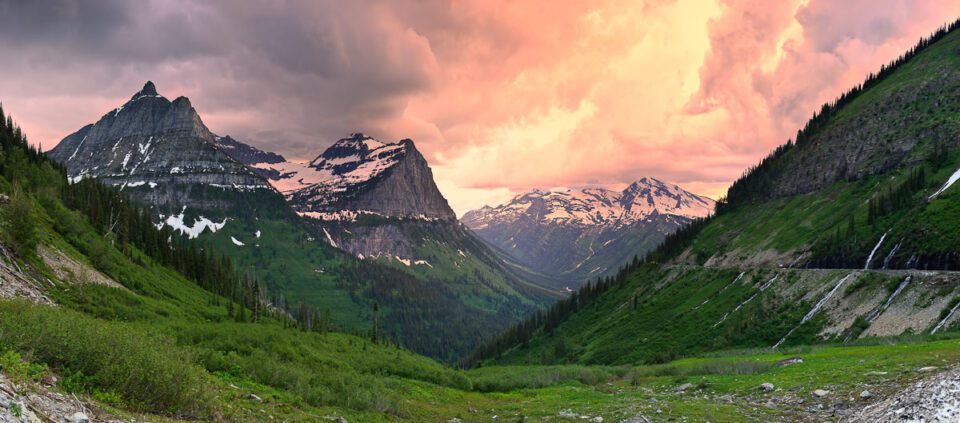
NIKON D3S + 24-70mm f/2.viii @ 38mm, ISO 200, 1/6, f/viii.0
Opposite Graduated Neutral Density (GND) Filter
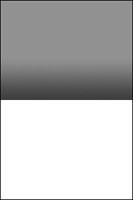 Reverse graduated neutral density filters are relatively new. When compared to regular difficult/soft-edge GND filters, they are dark at the horizon (hard-edge) and gradually soften towards the acme. Contrary GND filters are very useful for sunset shots when you shoot against the lord's day and it is near the horizon. A common problem with such sunsets is that the sun is much brighter than the sky. If you lot use a hard-edge GND filter, the heaven might become also dark and if you employ a soft-edge GND filter, the sun will be overexposed. The solution is to apply a reverse GND filter, which balances the sunday and the sky in the frame, resulting in a more balanced exposure.
Reverse graduated neutral density filters are relatively new. When compared to regular difficult/soft-edge GND filters, they are dark at the horizon (hard-edge) and gradually soften towards the acme. Contrary GND filters are very useful for sunset shots when you shoot against the lord's day and it is near the horizon. A common problem with such sunsets is that the sun is much brighter than the sky. If you lot use a hard-edge GND filter, the heaven might become also dark and if you employ a soft-edge GND filter, the sun will be overexposed. The solution is to apply a reverse GND filter, which balances the sunday and the sky in the frame, resulting in a more balanced exposure.
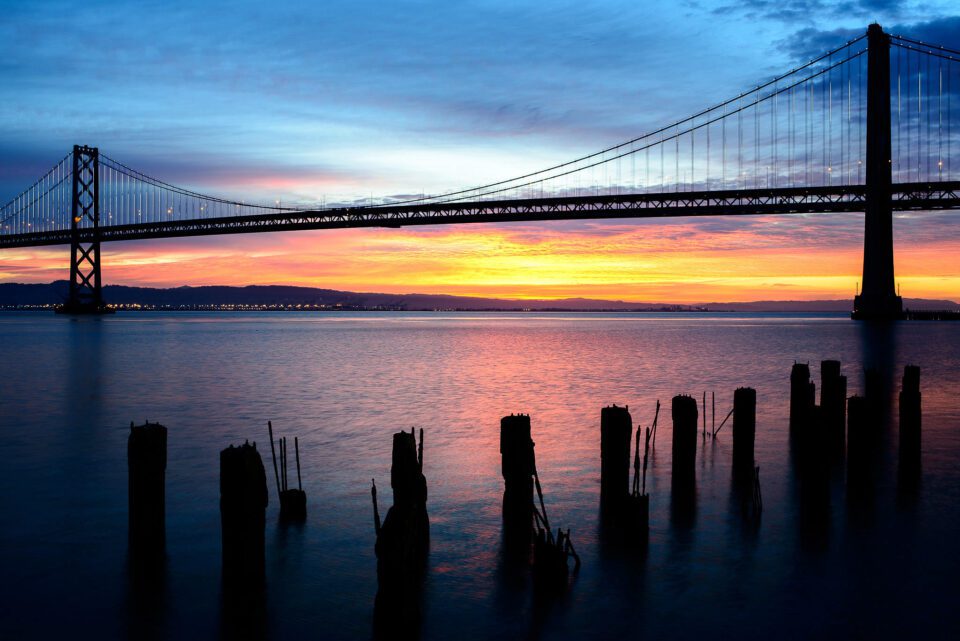
Stacking reverse GND filters is sometimes necessary in loftier-contrast and other rare situations.
Color/Warming/Cooling Filter
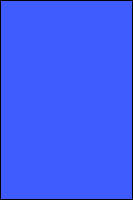 Color / Warming / Cooling filters are more often than not used to modify camera white residuum. At that place are 2 types of color filters – color correction and color subtraction. The erstwhile is used for correcting white balance, while the latter is used for absorbing one color while letting other colors through. These filters were quite popular for film, only are rarely used for digital photography, since colour effects and white balance changes can be easily accomplished in postal service-processing software like Lightroom and Photoshop. I personally practice not use any color filters. Stacking color filters is also adequate.
Color / Warming / Cooling filters are more often than not used to modify camera white residuum. At that place are 2 types of color filters – color correction and color subtraction. The erstwhile is used for correcting white balance, while the latter is used for absorbing one color while letting other colors through. These filters were quite popular for film, only are rarely used for digital photography, since colour effects and white balance changes can be easily accomplished in postal service-processing software like Lightroom and Photoshop. I personally practice not use any color filters. Stacking color filters is also adequate.
Close-Upward Filter
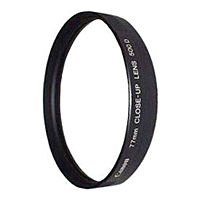 Shut-upward filters are generally called shut-up lenses, because they are more lenses than filters. They adhere to lenses just similar filters, which is why I am listing them every bit filters. Close-upwards lenses are primarily used for macro photography to be able to become closer to the subject area, decreasing the minimum focus distance of the lens. Close-upward lenses are a cheap mode to convert your normal lens to a macro lens, although they exercise negatively affect image quality. For the best results, it is recommended to use a macro lens instead. Stacking close-upwards filters is acceptable, although prototype quality is injure even more.
Shut-upward filters are generally called shut-up lenses, because they are more lenses than filters. They adhere to lenses just similar filters, which is why I am listing them every bit filters. Close-upwards lenses are primarily used for macro photography to be able to become closer to the subject area, decreasing the minimum focus distance of the lens. Close-upward lenses are a cheap mode to convert your normal lens to a macro lens, although they exercise negatively affect image quality. For the best results, it is recommended to use a macro lens instead. Stacking close-upwards filters is acceptable, although prototype quality is injure even more.
Special Effects Filter
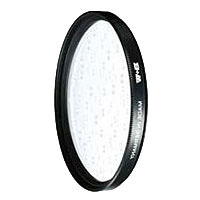 Special effects filters can produce some cool effects, but since nigh effects can be hands produced in Photoshop, these filters pretty much lost their popularity. Digital photographers rarely bear these filters and I personally practise not use them either. The star filter can be easily created in Photoshop through a couple of steps using the "Motion Blur" filter, softening glow can likewise be easily done through a couple of steps with the "Gaussian Blur" filter and most other filters can also be done in Photoshop. The only filter that cannot exist reproduced in Photoshop is a bokeh filter considering the highlights cannot be easily inverse through post-processing techniques.
Special effects filters can produce some cool effects, but since nigh effects can be hands produced in Photoshop, these filters pretty much lost their popularity. Digital photographers rarely bear these filters and I personally practise not use them either. The star filter can be easily created in Photoshop through a couple of steps using the "Motion Blur" filter, softening glow can likewise be easily done through a couple of steps with the "Gaussian Blur" filter and most other filters can also be done in Photoshop. The only filter that cannot exist reproduced in Photoshop is a bokeh filter considering the highlights cannot be easily inverse through post-processing techniques.
Here is a 2 minute "star effect" that I created in Photoshop using very elementary technique with the Motion Blur filter:
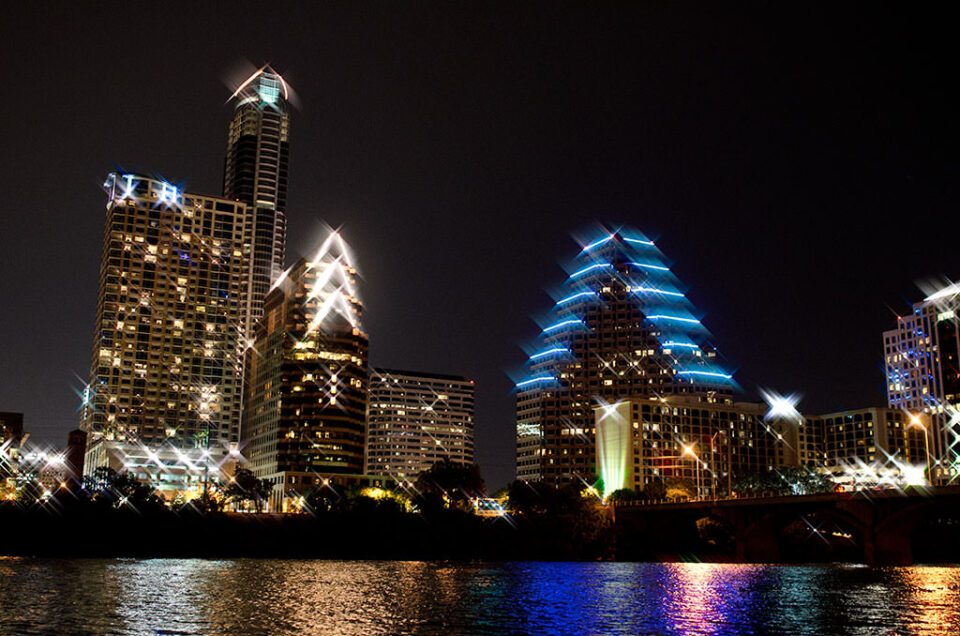
Filter Material – Glass vs Resin Filters
Filters tin be made from drinking glass, plastic, resin, polyester and polycarbonate material. Glass filters are typically of the highest quality, but are very expensive and tend to easily break, particularly of foursquare or rectangular type. Plastic and resin filters are much cheaper than glass and do non easily break – they are the pinnacle choice for graduated neutral density filters. Polyester filters are much thinner than glass or resin and are of very loftier quality, but are decumbent to scratches and hence not very practical on the field. Polycarbonate filters are very tough, scratch-resistant and are a good culling to plastic/resin filters. For best results, I recommend using glass vs resin filters.
Step-Up / Pace-Down Rings
Considering filters tin be expensive, it is much cheaper to purchase a unmarried standard filter (for case 77mm) and buy pace-up rings for lenses that take smaller filter threads. Stride-down rings can cause vignetting and other problems, so e'er endeavor to use footstep-upward rings instead. You can buy step-up rings for both circular and square filter holder systems in diverse sizes.
What Is A Pl Filter,
Source: https://photographylife.com/lens-filters-explained
Posted by: rogersocke2001.blogspot.com


0 Response to "What Is A Pl Filter"
Post a Comment